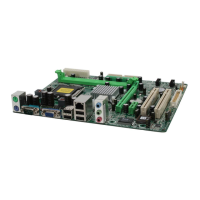
Do you have a question about the Biostar P4M890-M7 FE - BIOS SETUP and is the answer not in the manual?
| Form Factor | Micro ATX |
|---|---|
| Socket Type | LGA 775 |
| Chipset | VIA P4M890 |
| Memory Slots | 2 x DDR2 DIMM |
| Maximum Memory | 2 GB |
| Integrated Graphics | VIA Chrome9 HC IGP |
| BIOS Type | AMI BIOS |
| Expansion Slots | 1 x PCI Express x16, 2 x PCI |
| Audio | 6-Channel Audio |
| LAN | Realtek RTL8201CL 10/100M LAN |
| USB Ports | 4 x USB 2.0 |
| BIOS Features | ACPI, DMI |
Explains the purpose of the BIOS setup and CMOS RAM, detailing system control and initialization.
States support for the Plug and Play Version 1.0A specification.
Covers EPA Green PC and APM/ACPI support features for energy conservation.
Outlines support for PCI bus, DRAM, and Intel CPUs.
Explains keyboard controls and function keys for BIOS navigation.
Describes the Main Menu structure and how to select setup functions.
Lists essential setup actions like loading defaults and setting passwords.
Details methods for saving/exiting and upgrading the BIOS.
Introduces the categories and items within the Standard CMOS Setup.
How to set the system's date and internal clock.
Settings for IDE channels, master/slave devices, and drive types.
Configuration options for floppy drives and system halt behavior.
Displays detected conventional and extended memory.
Configures boot device priority and floppy drive handling.
Sets the sequence for booting from hard disk drives.
Defines the order of bootable devices.
Manages video BIOS shadowing for performance.
Configures CPU cache options and advanced CPU features.
Adjusts CPU thermal functions, bus ratios, and voltage.
Includes settings for virtualization, hyper-threading, and virus warnings.
Controls POST behavior, NumLock, and typematic settings.
Manages OS-dependent DRAM settings and HDD SMART capability.
Configures AGP aperture size and mode for graphics.
Sets graphics memory address range and AGP transfer mode.
Controls VGA master write/read states and direct frame buffer.
Manages PCI bus transactions and VLink modes.
Configures PCI bus transactions and VLink modes.
Manages memory reservations and system BIOS caching.
Configures SATA, IDE DMA, and PIO/UDMA modes.
Selects SATA mode and configures IDE channels and prefetch.
Enables block transfer for IDE hard drives.
Controls onboard HD audio, LAN, and LAN boot ROM.
Configures USB controllers, modes, and boot functions.
Manages USB controller modes and keyboard/mouse/storage functions.
Displays the status of Advanced Configuration and Power Management (ACPI).
Selects power saving methods like HDD power down and suspend modes.
Manages video off features, power button behavior, and restart options.
Controls High Precision Event Timer and Watchdog Timer.
Sets up events that can wake the system from suspend mode.
Configures RTC alarm wakeup and modem ring resume functions.
Controls PNP OS initialization and primary display device.
Manages IRQ assignments and resource control for peripherals.
Allows snooping on VGA palette for compatibility.
Assigns Interrupt ReQuest (IRQ) lines for VGA and USB devices.
Sets the maximum payload size for PCI Express transaction packets.
Configures CPU fan speed based on temperature.
Details fan duty cycle, start temperatures, and shutdown thresholds.
Displays current CPU temperature, fan speeds, and system voltages.
Shows the current speed of the system fan.
Enables display of hardware status during Power-On Self-Test.
Manages DRAM clock speed and drive control settings.
Configures DRAM timing parameters like CAS Latency and tRAS.
Allows selection of CPU clock speed and overclocking settings.
Configures PCIE clock speed and CPU clock multiplier.
Controls spread spectrum function and DDR voltage settings.
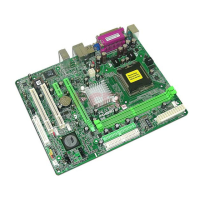
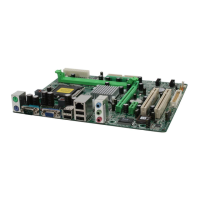

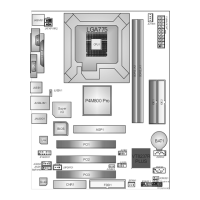
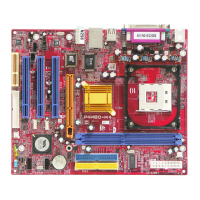
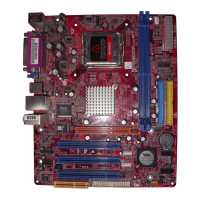
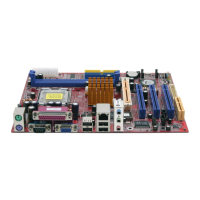


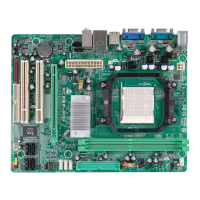
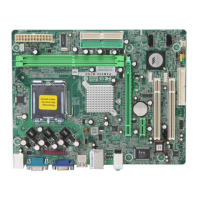
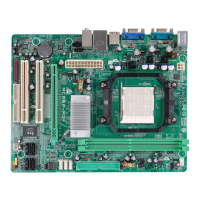
